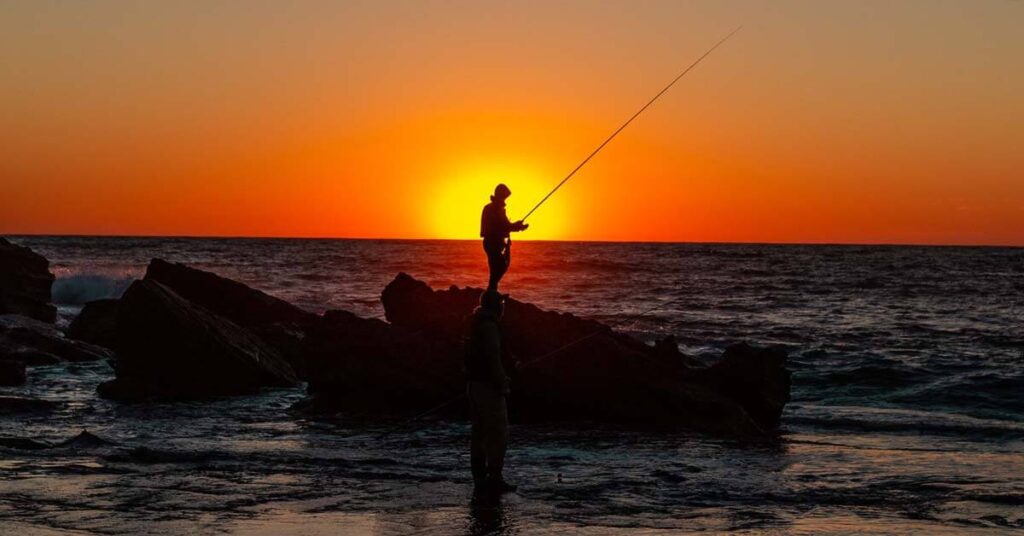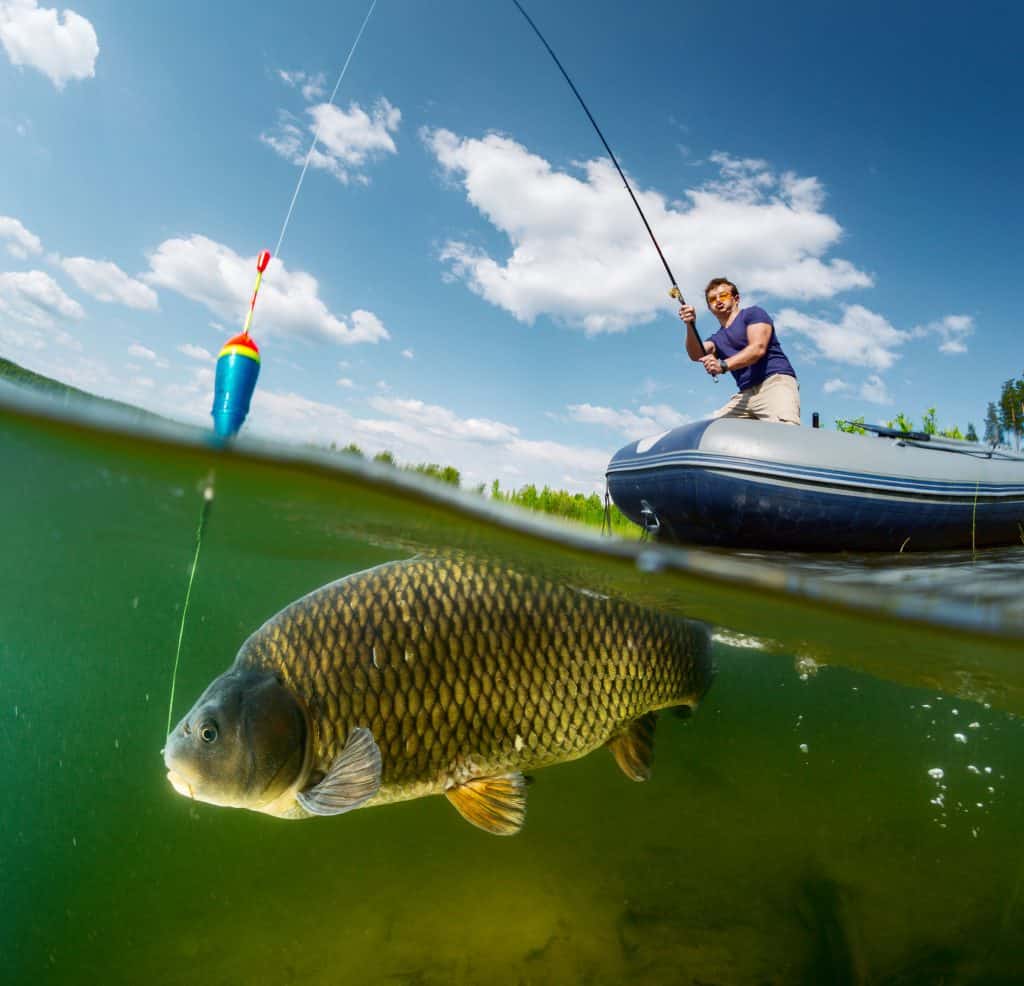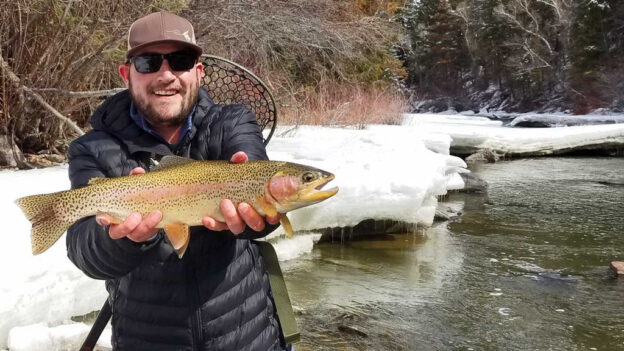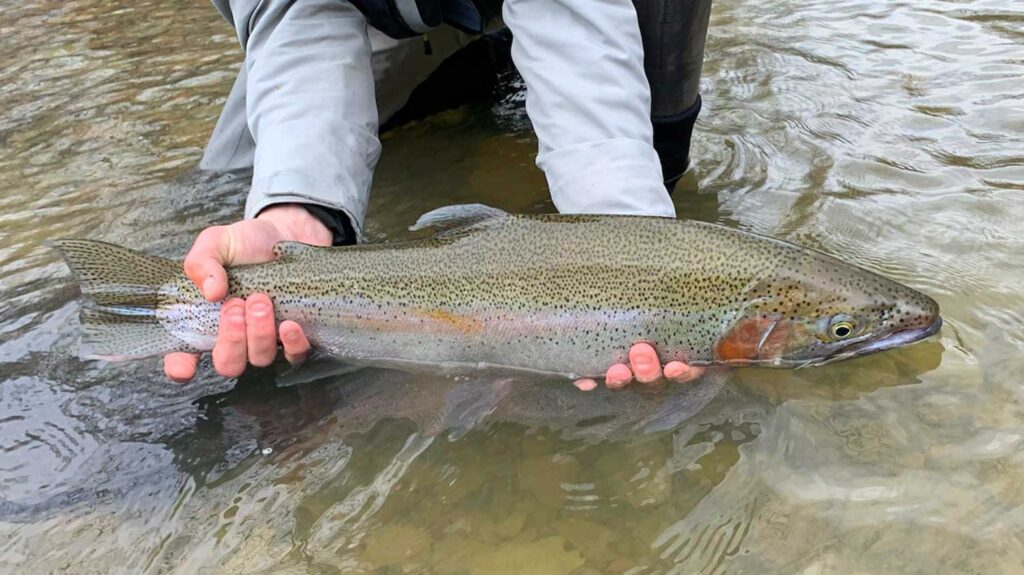Are you interested in taking up fishing as a hobby but are concerned about the potential costs involved? In this article, we will explore whether fishing is truly an expensive pastime. We will delve into the various expenses one may encounter, such as equipment, licenses, and travel, while also considering ways to make this hobby more affordable. So, if you’ve been contemplating the idea of casting your line into the tranquil waters, join us as we unravel the truth about the costs of fishing.
Cost of Fishing Equipment
Fishing is a beloved pastime for many people around the world, but one question that often comes up is whether fishing is an expensive hobby. The answer to that question largely depends on various factors, including the type of fishing you plan to engage in, the level of involvement you desire, and the equipment you choose to invest in. Let’s break down the different components that contribute to the cost of fishing.
Rods and Reels
Rods and reels are the most essential pieces of fishing equipment. The cost of these items can range from budget-friendly options to high-end, professional-grade gear. For casual weekend fishing or beginners, there are plenty of affordable rod and reel combos available that can still provide a satisfying fishing experience. However, if you decide to take your fishing to the next level or engage in competitive angling, you may want to invest in more specialized and higher-quality rods and reels, which can significantly increase the overall cost.
Fishing Tackle
Fishing tackle refers to the various tools and accessories used in fishing, such as hooks, sinkers, floats, and swivels. These smaller items may seem insignificant, but they can add up in terms of cost, especially if you require a wide range of tackle options to accommodate different fishing conditions and techniques. While there are budget-friendly tackle options available, avid anglers who want to have a comprehensive tackle collection might find themselves spending a considerable amount on these items.
Fishing Line
Fishing line is another essential component of fishing equipment, and it comes in different materials and strengths. Again, the cost can vary depending on the quality and brand. Different fishing techniques and target species may require specific types of fishing line, which could further affect the overall expense. Additionally, fishing line has a limited lifespan and needs to be replaced regularly, so ongoing costs for purchasing new line should also be taken into account.
Bait and Lures
Bait and lures are an integral part of fishing, as they attract fish to bite. Live bait, such as worms or minnows, can be relatively inexpensive if sourced locally or obtained by catching your own. However, if you prefer using artificial lures, the cost can vary greatly depending on the brand, quality, and type of lure. Some specialized lures designed for specific species or fishing techniques can be quite pricey. Considering the variety of options available, it’s easy to get carried away and accumulate a substantial collection of bait and lures, further impacting the overall cost.
Fishing Accessories
Fishing accessories encompass a wide range of items that enhance the angling experience or provide convenience. This category includes items such as tackle boxes, fishing nets, rod holders, fish finders, and fishing apparel. While many of these accessories are not absolutely necessary, they can greatly improve your fishing efficiency and comfort. The cost of fishing accessories can vary depending on the brand, quality, and specific features you desire. It’s important to prioritize your needs and only invest in accessories that will genuinely enhance your fishing experience.
Additional Expenses
Apart from the fishing equipment, there are additional expenses to consider when calculating the cost of fishing. These expenses can vary depending on your fishing preferences and the location or method you choose to fish.
Fishing Licenses and Permits
In most regions, a fishing license or permit is required to legally fish in public waters. The cost of fishing licenses and permits can vary based on factors such as the duration of the license, residency status, and the type of fishing you plan to engage in. It’s important to research the applicable regulations in your area and budget accordingly. Keep in mind that fishing without a valid license or permit can result in fines or legal consequences, so it’s always best to adhere to local regulations.
Boat or Kayak Rental
If you prefer fishing on a boat or kayak, you’ll need to consider the cost of renting or owning the watercraft. Boat or kayak rentals can vary depending on the duration and location. If you plan to fish frequently or in different areas, owning a boat or kayak might be a more cost-effective option in the long run, although it does come with additional costs such as maintenance, fuel, and storage.
Travel Expenses
For those who enjoy fishing in different locations or even travel for specific fishing destinations, travel expenses can significantly contribute to the overall cost of fishing. Costs can include transportation, accommodation, meals, and any additional activities or excursions. If you’re planning a fishing trip, it’s essential to carefully budget and consider all potential expenses to avoid any financial surprises.
Fishing Guide or Charter Services
If you’re new to fishing or want to increase your chances of a successful catch, hiring a fishing guide or charter service can be beneficial. These professionals can provide valuable knowledge, advice, and assistance throughout your fishing trip. However, it’s important to note that guide or charter services come at an additional cost. The price can vary depending on the duration of the trip, the expertise of the guide, and the specific services provided. While it may add to the overall expense, it can also greatly enhance your fishing experience, making it worth considering.
Maintenance and Repairs
Lastly, it’s crucial to factor in ongoing maintenance and repair costs for your fishing equipment. Rods and reels may require occasional servicing or replacement of parts, while boats or kayaks often require routine maintenance to ensure they’re in optimal condition. These costs can vary depending on the extent of repairs needed or the level of maintenance required, but they should be taken into account to accurately estimate the overall cost of fishing.

This image is property of panfishnation.com.
Types of Fishing
The type of fishing you choose to engage in can also impact the overall cost. Here are some common types of fishing and what they entail:
Freshwater Fishing
Freshwater fishing, as the name suggests, takes place in inland bodies of water such as lakes, rivers, and ponds. This type of fishing is generally more affordable compared to other types, as it often requires less specialized equipment and can easily be accessed by land. Freshwater fishing offers a wide variety of species to target and is a popular choice for beginners or casual anglers.
Saltwater Fishing
Saltwater fishing, on the other hand, takes place in oceans, seas, and coastal areas. This type of fishing often requires more robust and specialized equipment due to the larger and more powerful fish species found in saltwater. The cost can be higher, especially if you plan to venture offshore or deep-sea fishing, as it may require additional gear like heavy-duty rods, reels, and even a boat. However, saltwater fishing can offer thrilling experiences and the opportunity to catch unique and trophy-sized fish.
Fly Fishing
Fly fishing is a method that uses a lightweight lure, known as a fly, and specialized techniques to imitate the movement of insects or smaller aquatic creatures. This type of fishing is typically associated with freshwater rivers and streams, although it can also be practiced in saltwater. Fly fishing equipment can be more expensive due to the specialized rods, reels, and lines required. However, it offers a unique experience and is often regarded as a more immersive and artistic form of angling.
Ice Fishing
Ice fishing is a popular winter activity in regions with frozen lakes and rivers. It involves drilling holes in the ice and fishing through them. Ice fishing requires specialized equipment such as an ice auger, ice fishing rods, and shelters to protect from the cold. While the cost of ice fishing gear can be relatively high, it offers a unique and exciting fishing experience during the winter months.
Deep-Sea Fishing
Deep-sea fishing, also known as offshore fishing, involves venturing into the open ocean in search of large game fish. This type of fishing requires powerful boats and specialized equipment designed to withstand the harsh conditions encountered in deep waters. Deep-sea fishing charters can be quite expensive, considering the higher costs associated with fuel, equipment, and the expertise of the crew. However, the thrill and potential for catching trophy-sized fish make it a sought-after and unforgettable experience for many anglers.
Level of Involvement
The level of involvement you desire in fishing can significantly impact the overall cost. Here are different levels of fishing involvement to consider:
Casual Weekend Fishing
For those who enjoy fishing as a recreational activity and want to spend a relaxing weekend by the water, casual weekend fishing is a popular choice. This level of involvement typically requires basic fishing equipment and can be relatively affordable. A simple rod and reel combo, a tackle box with a few essentials, and a selection of bait or lures are all that’s needed for a pleasant fishing experience without breaking the bank.
Competitive Angling
Competitive angling involves participating in fishing tournaments or competitions. This level of involvement can be more expensive due to the need for specialized gear, high-quality equipment, and sometimes even professional coaching or training. The costs can vary depending on the specific tournaments entered and the level of competition. However, the thrill of competing against other anglers and the potential for winning prizes or recognition can make it worthwhile for those passionate about fishing.
Professional Fishing
For a select few, fishing isn’t just a hobby, but a profession. Professional anglers rely on their fishing skills and success to make a living through sponsorships, endorsements, tournament winnings, and guiding services. Becoming a professional fisherman often requires a substantial investment in terms of gear, tournament fees, travel expenses, and ongoing training. It’s important to note that the cost of professional fishing can be considerable, and reaching the professional level usually requires years of dedication, skill development, and financial commitment.

This image is property of assets.website-files.com.
Where You Fish
The location where you choose to fish can also influence the overall cost. Here are different fishing locations to consider:
Public Fishing Spots
Public fishing spots, such as local lakes, rivers, and ponds, are accessible to all and generally do not require any additional fees besides the necessary fishing license or permit. These spots are often well-maintained, easily accessible by land, and provide excellent opportunities for recreational fishing at an affordable cost. Public spots are a great starting point for beginners or those looking to enjoy fishing without incurring substantial expenses.
Private Fishing Clubs
Private fishing clubs offer exclusive access to their waters and amenities for a membership fee or annual dues. The cost of joining a private fishing club can vary significantly depending on the club’s prestige, the quality of fishing, and the additional facilities available, such as comfortable fishing lodges or well-stocked tackle shops. Being a member of a private fishing club can provide a more controlled and serene fishing experience but does come with higher costs compared to public spots.
Pay-to-Fish Ponds
Pay-to-fish ponds are another option for anglers, particularly those who want a guaranteed catch. These ponds are stocked with fish and often have a fixed fee per hour or per fish caught. While pay-to-fish ponds can eliminate the uncertainty of catching fish, they can be more expensive compared to other fishing locations, especially if you plan to fish for an extended period or catch multiple fish.
International Fishing Destinations
For those with a taste for adventure, fishing in international destinations can be an unforgettable experience. Traveling abroad for fishing introduces additional costs such as airfare, accommodation, and potentially hiring local guides or charter services. Depending on the destination, the exchange rate, and the desired fishing experience, the overall cost can vary greatly. However, the opportunity to explore new fishing grounds, encounter exotic species, and immerse oneself in different cultures can make the expense worthwhile for avid anglers.
Remote or Inaccessible Locations
Fishing in remote or inaccessible locations, such as pristine wilderness areas or secluded backcountry rivers, may require additional expenses. These locations may require special permits, transportation arrangements like helicopter rides, or hiring wilderness guides due to their remote nature. While fishing in these locations can be an incredible adventure, it’s important to factor in the extra costs that come with accessing these pristine and untouched fishing spots.
Seasonality and Availability
The seasonality and availability of fishing can impact both the cost and the overall experience. Here are some factors to consider:
Fishing Seasons
Fishing seasons vary depending on the region and the species being targeted. Some fish species can only be caught during specific seasons to protect their populations and ensure sustainable fishing practices. It’s important to be aware of the fishing seasons in your area, as this can significantly impact the availability of certain species and the overall fishing experience. Being able to target specific species during their migration or breeding seasons can lead to a more successful and fulfilling fishing trip.
Limited or Restricted Fishing Areas
Certain fishing areas may impose restrictions or limitations on anglers to protect sensitive ecosystems, endangered species, or cultural heritage sites. These limitations can come in the form of fishing closures, catch limits, or specific regulations that require adherence. While these restrictions contribute to conservation efforts, they might limit the fishing opportunities in those areas. It’s crucial to stay updated with local regulations and consider any potential limitations when planning your fishing trips.
Specific Species
Trophy-sized or highly sought-after fish species often require additional resources and investment to target successfully. For example, pursuing big game fish like marlin, tuna, or muskellunge may involve specialized gear, longer travel distances, and the hiring of experienced guides. The cost of targeting specific species can vary depending on factors like the rarity, migratory patterns, and the techniques required to catch them. While pursuing specific species can enhance the excitement of fishing for certain individuals, it’s essential to consider the associated costs before embarking on those adventures.

This image is property of i0.wp.com.
Time and Commitment
The amount of time and commitment you dedicate to fishing can influence the overall cost. Here are some aspects to consider:
Fishing Frequency
The frequency at which you choose to fish can impact the cost of your hobby. If you’re an avid angler and fish frequently throughout the year, you may find yourself spending more on equipment maintenance, gear replacement, bait or lures, and ongoing fishing licenses or permits. Conversely, if fishing is more of an occasional hobby or a seasonal activity, the costs associated with fishing will be relatively lower.
Fishing Duration
The duration of your fishing trips can also contribute to the overall cost. Longer trips typically incur higher expenses, including transportation, meals, accommodation, and potentially guide or charter services. Conversely, shorter fishing outings that can be done within a day or a few hours generally come with fewer additional costs. Considering the duration of your fishing trips can help you estimate the overall expense and plan accordingly.
Learning and Skill Development
Fishing, like any other hobby, requires continuous learning and skill development. Investing time and resources into improving your angling skills through workshops, courses, or even hiring a fishing coach can contribute to the overall cost. However, improving your techniques and knowledge can enhance your fishing success and satisfaction, making it a worthwhile investment for those committed to the hobby in the long run.
Time Spent on Recreational Activities
While fishing itself is an enjoyable recreational activity, there are often other activities associated with it, particularly if you’re fishing in a scenic location or on an extended fishing trip. Whether it’s camping, hiking, or simply enjoying nature, additional recreational activities can add to the overall cost. It’s important to consider the potential expenses associated with these activities when planning your fishing outings.
Cost-Saving Strategies
If you’re looking to minimize the cost of fishing, there are several strategies you can employ. Here are some cost-saving tips:
Buying Used Equipment
Consider purchasing used fishing equipment to save on initial costs. Many anglers upgrade their gear regularly, creating a market for used fishing equipment. Online platforms, local classifieds, or fishing forums can be great resources for finding quality used gear at a fraction of the original cost. However, ensure that the equipment is in good working condition and fits your fishing needs before making a purchase.
DIY Tackle Making
Making your own fishing tackle, such as tying your own flies or creating homemade lures, is not only a cost-effective option but also adds a personal touch to your fishing experience. There are numerous online tutorials, books, and workshops available to help you get started with tackle making. Not only can this save you money, but it can also be a rewarding and creative aspect of the hobby.
Fishing with Friends
Fishing with friends or joining a fishing club can help distribute the costs associated with the hobby. Sharing equipment, bait, and expenses like transportation or accommodation can significantly reduce individual costs. Additionally, fishing with others can enhance the overall experience by fostering camaraderie and creating memorable moments to share.
Sharing Expenses
If you own a boat or other costly fishing equipment, consider sharing the expenses with other anglers. For example, splitting the costs of maintenance, fuel, and storage with fishing buddies can make owning and operating a boat more affordable. Sharing expenses not only reduces the financial burden but can also encourage more fishing outings and promote a sense of community among fishing enthusiasts.
Fishing during Off-Peak Times
Fishing during off-peak seasons or weekdays can often result in lower costs. Many fishing destinations offer discounted rates or deals during less popular times, as they aim to attract visitors during slower periods. Additionally, fishing during off-peak times can provide a more tranquil and less crowded experience. Researching and taking advantage of these opportunities can help reduce the overall cost of fishing.

This image is property of outdoortroop.com.
Return on Investment
While fishing may come with its expenses, it also provides numerous benefits that can be considered a return on investment. Here are some of the rewards of fishing:
Health Benefits
Fishing offers various health benefits, such as improved cardiovascular fitness, increased vitamin D intake from exposure to sunlight, and stress reduction. Spending time in nature, breathing fresh air, and engaging in physical activity while fishing contribute to overall well-being and can have positive effects on both mental and physical health.
Stress Relief and Relaxation
Fishing provides an escape from the stresses of daily life. Being immersed in nature, away from the hustle and bustle of urban environments, can help reduce stress levels and promote relaxation. The rhythmic casting and the soothing sounds of water can have a calming effect, allowing you to unwind and recharge.
Quality Time with Family and Friends
Fishing is an activity that appeals to people of all ages, making it a perfect opportunity for quality time with family and friends. Whether you’re introducing young ones to the joys of fishing, spending a peaceful day on the water with friends, or bonding with loved ones during a fishing trip, fishing creates memorable moments and strengthens relationships.
Connection with Nature
Fishing provides a unique opportunity to connect with nature and appreciate the beauty of our aquatic ecosystems. Being close to water and observing the natural world can foster a sense of environmental awareness and a deeper appreciation for the fragile balance of ecosystems. Fishing can lead to a greater understanding and desire to protect and preserve our natural resources.
Culinary Satisfaction
For many anglers, the ultimate reward of fishing is a delicious meal. Catching your own fish and preparing it as a fresh, home-cooked meal can be incredibly satisfying. Whether grilling, baking, or frying your catch, enjoying the fruits of your fishing efforts adds an extra level of culinary enjoyment to the overall fishing experience.
Conclusion
In conclusion, while fishing can have its expenses, it’s important to consider the numerous benefits and rewards it offers. The cost of fishing depends on various factors, such as the type of fishing, level of involvement, location, and the amount of time and resources invested. By carefully planning and considering your individual preferences and budget, you can enjoy the joys of fishing while maintaining a reasonable expenditure. Whether you choose to fish casually on the weekends, engage in competitive angling, or pursue professional fishing, the rewards and experiences gained from this beloved hobby make it worthwhile for countless enthusiasts around the world.
This image is property of qph.cf2.quoracdn.net.






